|
0 Comments
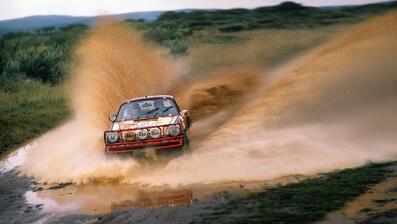 Because it looks cool and fun to drive. And the race has an interesting history. 911 safari cars have become somewhat trendy in the last few years. Google it and you'll see lot's of interpretations of what a Safari 911 should look like. I've chosen something a little more defined - a tribute to the cars run in the 1978 East Africa Safari Rally.  The rally, run from March 23-27, 1978, covered over 3,000 miles of grueling African terrain. Early in the rally season, Mitsubishi had performed poorly. Ford, having done well in Monaco, and Fiat/Lancia, having done well in Monaco and Sweden, had suggested they would to skip this race (Ford ended up competing). The uncertainty lead to concern about the quality of competition. However, both Martini-sponsored Porsche (following a win in Monaco), and Mercedes-Benz (following a successful race at the 1977 London-Sidney Rally) were planning to participate. Porsche had secured Vic Preston, Jr. (Nairobi) and Bjorn Waldengard (Sweden) to drive their two entries. Vic drove #14 and Bjorn (1977's winner) drove #5. Peugeot and Datsun each sent four cars to the race. 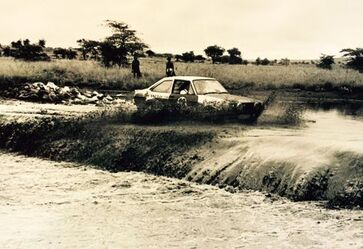 The weather was unusually wet leading into the race, transforming the roads into rivers and mud bogs, and the race into a dangerous affair. Motorsport Magazine: "Had the rain stopped just before the Rally, the sun would have baked what was left of the roads into the roughest route the event has known, for the absence of a proper dry period meant that no repair work could be carried out on the devastated bush tracks. But the rain didn’t stop, and what emerged was an endless battle with torrential rain, deep clinging mud, landslides, potholes, washaways, flash floods and instant rivers so deep and fast-flowing that crossing one of them was a feat of bravery and ingenuity in itself."  The race was surprisingly close, considering the conditions. Waldegard's #5 911 led early on, but gave up the lead to the Datsun, driven by Aaltonen, after a suspension failure. Aaltonen led until near the end of the race when he became stuck in a ditch, giving up the lead to fellow Datsun driver Kallstrom. Kallstrom then suffered an axle failure, giving the lead to Nicolas in his Peugeot, who won the rally, despite a nearly disabling accident with a spectator's car. Porsche fared well, with Vic Preston Jr. taking second, and Bjorn Waldegard taking fourth. If not for a couple of repairs late in the race, Preston would have been first - he finished only 37 minutes behind the leader. The race put Porsche in the lead for the World Championship. Porsche finished fourth in the World Championship that year. A very good showing for such a brutal race series. And further proof of the reliability and versatility of the Porsche 911. A Final Note
There are a few good resources you might want to check out if you're interested. Please contact me if you know of any other resources and I'll add them to the list. 1. A write-up by the Porsche newsroom provides a summary of the race and some nice photos. A must-read if you're interested in Porsche's perspective on the race. Read it here. 2. An Associated Press report covering the race. See it here. 3. A write-up in the British publication Motorsport. Read it here. 4. A walk-around one of the cars at the Porsche museum. See it here. 5. A Porsche produced walk-around of one of the cars. See it here. 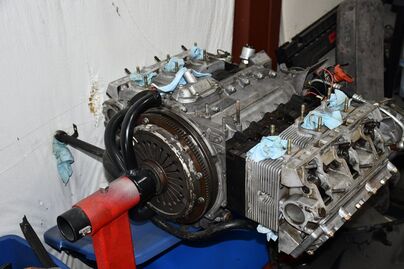 The 930/20 engine waiting for its new home. The 930/20 engine waiting for its new home. The first step is finding a candidate car. If you're lucky, you have one. Maybe it was your father's, maybe you found one online. There are plenty of cars out there, but you have to know what to look for. To many who aren't familiar with Porsches, a vintage model is a goldmine, regardless of condition. So asking prices tend to be high. And the market as of this writing (and for the past several years) has been high. Finding a decent candidate car, at a decent price, is difficult. One of the Friends of Refresche contacted me about a project car that became available. The car was a ROW '79 911 SC coupe, with an '85 3.2 liter 930/20 engine. That's a mouthful. Let's briefly break it down for those who don't know. "ROW" means the car was not built for the U.S. market, but for the Rest of the World. ROW cars, also known as "euro-spec" cars, were different than U.S. cars. Among them were different headlights and tail lights, side markers located high on the front fenders, smaller bumperettes and no sunroof. There were other differences, but that's the basic idea. The lack of sunroof is significant because U.S. coupes without sunroofs are hard to find. Sunroofs don't age well and can leak. They also add weight. Now look at the engine. Notice that the engine is a 1985 3.2 liter, rather than a 1979 3.0 liter, which would have been the original engine. Since the engine is not original, I am free from my compulsion to restore the car to original conditions. Also note that the engine is a model 930/20. That was also a ROW model, which didn't have strict emission controls, so it made about 24 hp more power than the U.S. counterpart. It's a desirable engine. 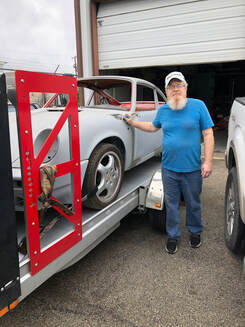 Keith saying good-bye to his project Porsche. Keith saying good-bye to his project Porsche. Here's the car ready for towing to my shop, along with Keith, the current owner. The car was there for ten years. Keith had the forethought to prime it, so it was fairly well protected. Some weld work and panel replacement was done and there was some surface rust. The car was fairly complete, but partially disassembled. The engine was removed, but the transmission was still installed. The heating system was complete (the parts are hard to find). I knew there would be some surprises, but the car looked like a decent value. We discussed the price and I paid Keith on the spot. A few shots of the car as-purchased are below. Here are the car and parts outside my shop, and tucked in for the night. I'm ready to start building a Safari tribute car.
|
Details
AuthorHi. I'm Eric Kelner. I restore, modify, collect and, most importantly, drive Porsches. One of my friends has a t-shirt that says: I'm pretty sure my last words will be "Oh sh#%, that didn't work!" These are writings about my experiences restoring, modifying, maintaining and enjoying Porsches. Feel free to comment.
|

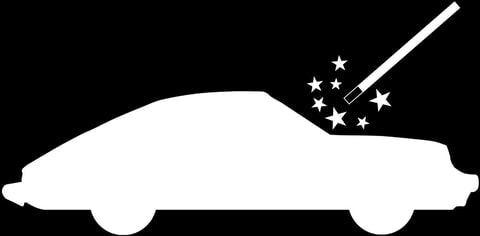











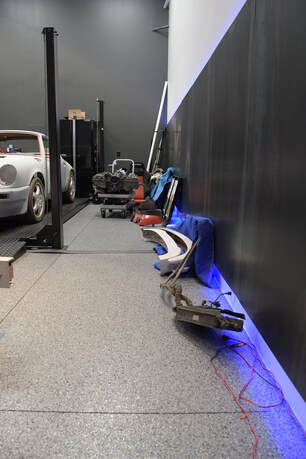
 RSS Feed
RSS Feed